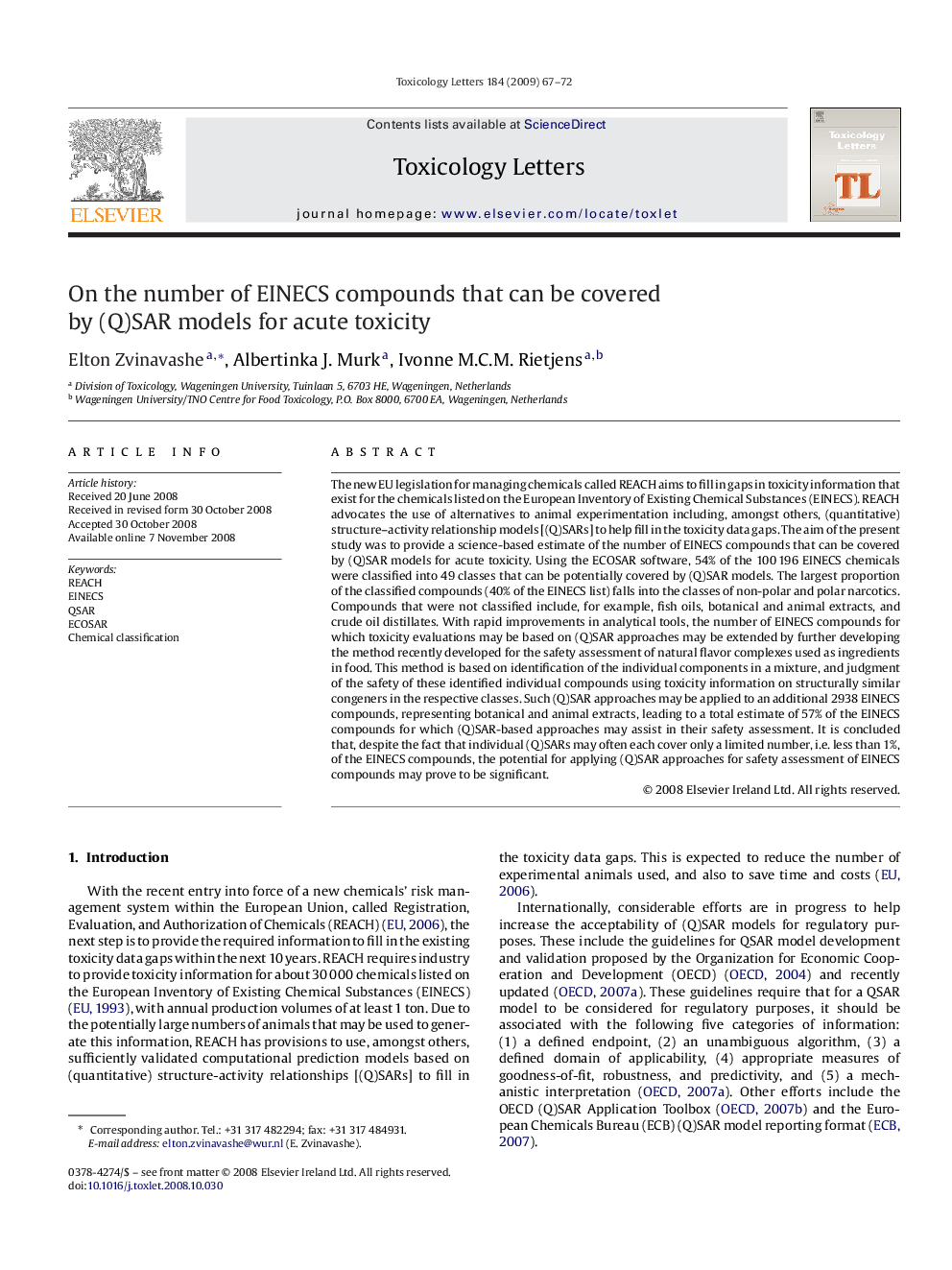| Article ID | Journal | Published Year | Pages | File Type |
|---|---|---|---|---|
| 2601226 | Toxicology Letters | 2009 | 6 Pages |
The new EU legislation for managing chemicals called REACH aims to fill in gaps in toxicity information that exist for the chemicals listed on the European Inventory of Existing Chemical Substances (EINECS). REACH advocates the use of alternatives to animal experimentation including, amongst others, (quantitative) structure–activity relationship models [(Q)SARs] to help fill in the toxicity data gaps. The aim of the present study was to provide a science-based estimate of the number of EINECS compounds that can be covered by (Q)SAR models for acute toxicity. Using the ECOSAR software, 54% of the 100 196 EINECS chemicals were classified into 49 classes that can be potentially covered by (Q)SAR models. The largest proportion of the classified compounds (40% of the EINECS list) falls into the classes of non-polar and polar narcotics. Compounds that were not classified include, for example, fish oils, botanical and animal extracts, and crude oil distillates. With rapid improvements in analytical tools, the number of EINECS compounds for which toxicity evaluations may be based on (Q)SAR approaches may be extended by further developing the method recently developed for the safety assessment of natural flavor complexes used as ingredients in food. This method is based on identification of the individual components in a mixture, and judgment of the safety of these identified individual compounds using toxicity information on structurally similar congeners in the respective classes. Such (Q)SAR approaches may be applied to an additional 2938 EINECS compounds, representing botanical and animal extracts, leading to a total estimate of 57% of the EINECS compounds for which (Q)SAR-based approaches may assist in their safety assessment. It is concluded that, despite the fact that individual (Q)SARs may often each cover only a limited number, i.e. less than 1%, of the EINECS compounds, the potential for applying (Q)SAR approaches for safety assessment of EINECS compounds may prove to be significant.
